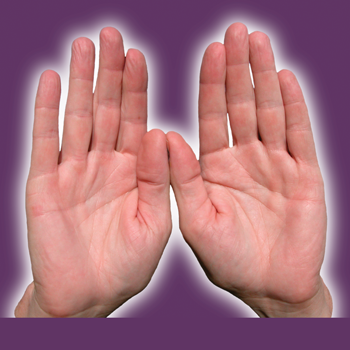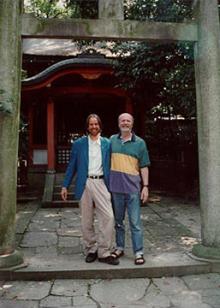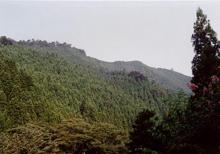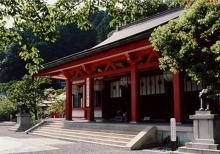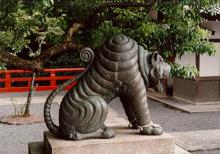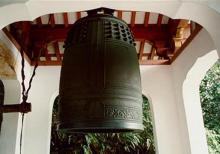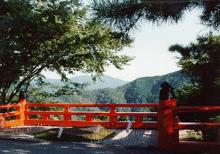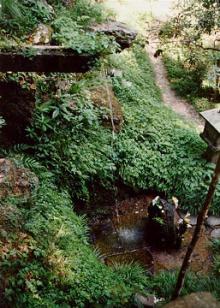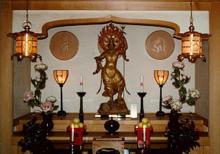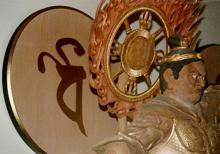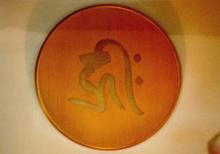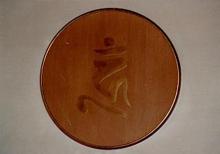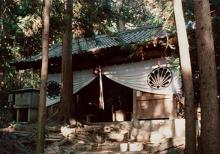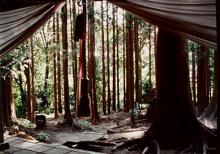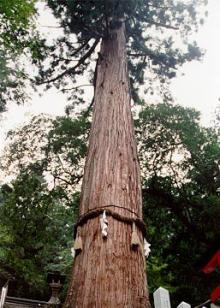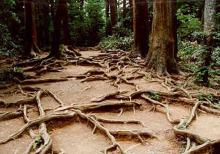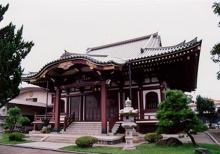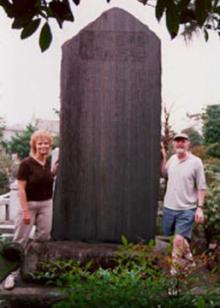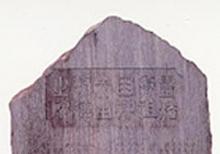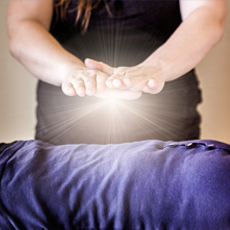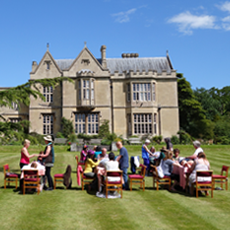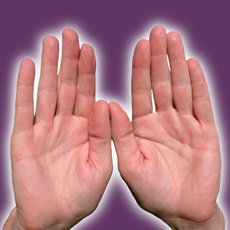By William Lee Rand and Laurelle Shanti Gaia
As teachers and practitioners of Reiki we have enjoyed sharing the "traditional" story of the history of Reiki as taught in the West. However, this story has never felt complete to us and this feeling has been expressed by many others as well. Important information seemed to be missing and parts of the story didn't seem to fit. Some of the "facts" have been investigated, and found to be untrue and much has been unverified.
The information about Dr. Usui, or Usui Sensei as he is called by Reiki students in Japan, has been so limited and myth-like in the West that some people have wondered if he ever really existed. This has made it difficult to feel connected to him and the roots of the system he created.
Last year we published an article on the "Original Reiki Ideals" which revealed a more authentic version of what we had been given in the West. Since then additional information has been uncovered. The most interesting and verifiable of this new information is from Frank Arjava Petter and his new book, "Reiki Fire." Arjava was one of the first Western Reiki masters to teach other masters in Japan starting in 1993.
With the help of his Japanese wife, Chetna and Shizuko Akimoto, a Japanese Reiki master, Arjava contacted a number of important sources of information concerning the history of Reiki. Included were several people who learned Reiki from some of Usui Sensei's early teachers, namely a Mr. Oishi and a Mr. Fumio Ogawa.
Arjava also spoke to members of Usui Sensei's family and members of the Usui Reiki Ryoho Gakkai, which is the original Reiki organization started by Usui Sensei in Tokyo. From these contacts he filled in some missing information on the history of Reiki and discovered other valuable facts. This information provides more accurate insight into who Usui Sensei was, what motivated him to rediscover Reiki and how he and his students practiced.
After reading Arjava's book, we were interested in knowing more and e-mailed him with many questions. He answered our questions and invited us to Japan to visit the sacred sites and discuss the implications of this new information. We gladly accepted and flew to Japan the second week of September.
Many synchronistic events occurred in connection with our trip to Japan starting with someone faxing us important pages from Arjava's book. After our trip was scheduled, we met people who lived in Japan who offered to act as additional guides. One such person, Yuki Yamamoto, flew from Osaka, Japan to the Center to attend a Karuna Reikir class, but knew nothing about our planned trip. Osaka is close to Mt. Kurama and Yuki had been there many times. When he found out about our planned trip, he offered to join us at Mt. Kurama with his car and be our guide.
Just two weeks after meeting on the internet, Friedemann, who lives in Japan came to the University of Kentucky on business, and visited Laura at her Healing Center in Kentucky to exchange Reiki sessions. At this time we had not planned our trip to Japan. It turned out that Friedemann lives only 10 minutes from where Arjava lives in Japan and also offered to help us at Mt. Kurama! So, without seeking it, we had several extra guides that proved to be very helpful! We feel these things happened as a result of our daily Reiki practice during which we invite the energy to guide every aspect of our lives.
According to literature at the Mt. Kurama temple, in 770 A.D. a priest named Gantei climbed Mount Kurama, led by a white horse. His soul was enlightened with the realization of Bishamon-ten, the protector of the northern quarter of the Buddhist heaven and the spirit of the sun. Gantei founded the Buddhist temple on Mt. Kurama which went through many stages of development and restoration and now contains many temples and pagodas. The temple was formerly part of the Tendai sect of Buddhism. Since 1949, it has been part of the newly founded Kurama-Kokyo sect of Buddhism.
Arjava, Yuki and Friedemann accompanied us to Mt. Kurama during our several trips to the mountain. Mt. Kurama has wonderful energy!
The Kurama temples are located up the side of the mountain requiring that one hike up and down the mountain to visit the temples. This would normally be very tiring, but we found that taking a moment to rest quickly restores one's energy. Mt. Kurama is truly a "power spot" and the energy that flows is very uplifting yet calming. There is a feeling of contentment and peace. We both were aware of many helpful spirits from whom we received inspiration and guidance.
Our first stop up the mountain was at the San-mon Station. There is a shrine here representing the Trinity which, in the Kurama-Kokyo Buddhist sect, is known as Sonten or Supreme Deity. Sonten is thought to be the source of all creation - the essence of all that is. Sonten came to Earth in the form of a being over six million years ago when Mao-son, the great king of the conquerors of evil, descended upon Mt. Kurama from Venus. His mission was the salvation and evolution of mankind and all living things on earth.
Mao-son is also said to have incarnated as the spirit of the earth, residing inside an ancient cedar tree at the top of the mountain. This spirit emanates from Mount Kurama to this day. Sonten manifests on Earth as Love, Light and Power.
The love symbol is called Senju-Kannon and looks very similar to the Usui Mental/Emotional symbol. The light symbol is called Bishamon-ten and is represented by a Sanskrit symbol we were not familiar with.
The power symbol is called Mao-son and is represented by an older version of the Om symbol. The essence of all three is in each one. These three symbols are similar in meaning to the three symbols of Reiki II.
The kanji for the Usui master symbol is also used in the Kurama temple literature. The meaning of Sonten is expressed using the same kanji we use for the Usui master symbol. During a temple prayer in the Hondon temple, we were given special permission to be present as the priest used the name of the Usui master symbol during part of his chant!
It has to be more than a coincidence that the Usui master symbol is used by the Kurama temple to represent Sonten, the Supreme Deity and that the symbol which represents love looks very similar to the Usui mental/emotional symbol. Since Usui Sensei received his Reiki initiation on Mt. Kurama, it is likely he made use of some of the symbolism and philosophy of the Kurama temple in the formulation of Reiki.
In fact, the understanding we received from Shizuko Akimoto is that Usui Sensei studied many things before rediscovering Reiki. He took what he studied and combined what seemed right into the Usui system of healing. This is apparent in the "Reiki Ideals" which we now know came from the Meiji Emperor. This is indicated in the inscription on the Usui memorial, located at Saihoji temple. This inscription also indicates Usui Sensei studied many things, but his life was not going well when he decided to go to Mt. Kurama to meditate for answers. Perhaps he was looking for a personal transformation for which the mountain is noted and for help in healing his life. It seems he did what many of us have done when our lives have not gone well and we looked to the spiritual for answers and healing. He opened himself to the higher power and not only received a healing for himself, but a way to help others.
Mt. Kurama is covered with giant cedar trees. As we hiked upward, we passed through a section of the trail near the top of the mountain covered with roots and we thought, yes, the roots of Reiki. At the top of the mountain there is a quiet place with a small shrine called Okunoin Mao-den where Mao-son is said to have descended. Behind the shrine protected by an iron fence is an old cedar tree said to contain the spirit of Mao-son. This area is very calm and has the sound of running water and wind blowing through the trees. We spent a long time here meditating and giving Reiki treatments and attunements to each other.
The Memorial - Answers Carved in Stone
With the help of Arjava Petter, we found the memorial dedicated to Usui Sensei, the founder of the Reiki healing system. It is located at the Saihoji Temple in the Suginami district of Tokyo. The memorial was created by the Usui Reiki Ryoho Gakkai shortly after Usui Sensei's transition. This is the organization which Usui Sensei started to promote the practice and teaching of Reiki. The memorial site is maintained by the Usui Reiki Ryoho Gakkai. This was verified by officials of the Saihoji Temple where the memorial is located. We were surprised that the Usui Reiki Ryoho Gakkai still exists because part of the "traditional" story stated that all the members of this group died in the war or had stopped using Reiki and that Mrs. Takata was the only remaining teacher of the Usui system in the world. We now know the Usui Reiki Ryoho Gakkai has always existed and still exists today. They have been teaching and practicing Reiki in Japan all this time - although they became a closed or secret society after World War II.
The memorial consists of a large monolith about four feet wide and ten feet tall. On it, written in old style Japanese kanji, is a description of Usui Sensei's life and his discovery and use of Reiki. It is located in a public cemetery at the Saihoji Temple next to Usui Sensei's grave stone where his ashes, along with those of his wife and son, have been placed. The inscription on the memorial stone was written by Mr. Okata who is believed to be a member of the Usui Reiki Ryoho Gakkai and Mr. Ushida, who became president after Usui Sensei died. There are many important and interesting details included in the inscription.
We went to the memorial site with flowers and burned sage. A butterfly came and landed on the flowers we brought and it felt very peaceful as we drew all the Usui Reiki symbols and sent Reiki to Usui Sensei. We held hands and prayed for Reiki and Usui Sensei to guide us in writing this article and sharing a more accurate understanding of Reiki worldwide. We asked for this new information to help unite all Reiki practitioners in harmony and to inspire them to use Reiki to heal each other, all people of the world, and the Earth as a whole. While meditating, we became aware of Usui Sensei with a bright light all around him. We felt he was very happy that an image of his memorial would be seen by so many and that a clearer understanding of how he practiced Reiki would be known.
Shizuko Akimoto shared additional information about Usui Sensei and the history of Reiki. According to her research with Mr. Ogawa and other members of the Usui Reiki Ryoho Gakkai, there was never a mandatory fee for Reiki treatments. Dr. Hayashi charged whatever people could pay and if they were poor, he treated them for free. His Reiki business was not lucrative, but was done out of a desire to help people. Many of his students received their Reiki training in return for working at his clinic. If Usui Sensei became popular helping people who suffered from the Tokyo earthquake as it states on his memorial, it is likely that he did not insist on everyone paying a fee for his treatments, but like Dr. Hayashi, must have treated many for free.
The high fees for master level charged by some in the West are not a requirement of the Usui Reiki Ryoho Gakkai. Also, Usui Sensei and Dr. Hayashi are known to have had class manuals that were given to students, but which have not yet become available to us.
Since Reiki was not a lucrative business, some of Dr. Hayashi's students were forced to stop practicing Reiki due to a lack of adequate income. This suggests that a middle financial path may be more appropriate. A middle path allows one to charge reasonable fees so that one can earn a living, yet be able to lower fees when appropriate or to charge nothing for those unable to pay. This allows people to dedicate their life to doing Reiki full time, thus creating more adept healers who are able to help more people.
According to Arjava Petter, there is no title of "Grandmaster" or "Lineage Bearer" in the organization started by Usui Sensei. The person in charge of the organization is the president. Usui Sensei was the first president of the Usui Reiki Ryoho Gakkai. Since then, there have been five successive presidents: Mr. Ushida, Mr. Taketomi, Mr. Watanabe, Mr. Wanami, and the current president, Ms. Kimiko Koyama. Dr. Hayashi was a respected teacher, but was not a president and had no other responsibilities.
According to Rick Rivard, the current president, Ms. Koyama, is 91 years old and was taught Reiki around the age of 21. Although she was alive when Mikao Usui was living, she never met him. She learned Reiki from her late husband who was a navy man. When her husband was offered but turned down the position as head of the society, Ms. Koyama accepted the responsibility. Ms. Koyama is able to tell where an illness or injury is simply by watching as you enter the room. She treats the client in a reclining chair and receives inner messages that guide her hands during a session. She has developed tremendous healing skills as one would expect from the head of the Usui Reiki Ryoho Gakkai.
Language and cultural differences along with a reluctance on the part of the Usui Reiki Ryoho Gakkai to speak with Western Reiki practitioners has restricted our communication. This is why information about the original Usui Reiki organization has taken so long to surface in the West. However, some communication has occurred and a breakthrough is expected soon as the inscription on the Usui memorial states it is Usui Sensei's wish that Reiki be spread through out the world.
This new information about Reiki confirms what many of us have intuitively known all along - the main focus of Reiki is to help others, and because of this there is no need to always require payment for treatments or training if the person is in need and unable to pay. Mandatory high fees for the teaching level are not a requirement. Reiki was not always an oral tradition and both Usui Sensei and Dr. Hayashi had written material they gave to their students. Attunements and the practice of Reiki are based more on intuitive guidance and intention than on rigid rules with the Reiki energy being the defining element. The flexibility of the Usui system makes it broad enough to include a wide range of methods and techniques, thus validating the many different styles being practiced today. The leadership for Reiki lies in Japan where it originated, not in the West.
The Usui memorial, the information it contains and the energy of Mt. Kurama provide us with an enduring legacy that unites us with Usui Sensei and the spirit of Reiki he rediscovered. This connects us to the roots of the Usui system and provides grounding, which keeps Reiki organic and connects us to the living energies of its origin. The Usui memorial with its inscription provides a focal point for all Reiki groups to look to as a common link, helping to heal the fragmentation and competitiveness which has developed in the West.
Indications of other important discoveries have also made themselves known. We have received reports that the written material of Usui Sensei, Dr. Hayashi, and others has been discovered and will soon be translated and shared. More open communication is likely to occur with members of the Usui Reiki Ryoho Gakkai including the president which is bound to reveal additional useful information.
This is the most wonderful time for Reiki in the West now that we are finally learning the real story of Reiki. Many are feeling a wonderful sense of coming home. May we all share in the joy of these new discoveries and allow them to inspire and empower our Reiki practice.


